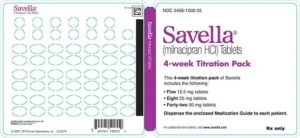At least 5-15 % of patients with Lyme disease (7,500 " 45,000 new cases each year) develop post-treatment Lyme syndrome (PTLS), debilitating residual symptoms that last for months or years, even after antibiotic treatment. Often patients with PTLS experience chronic pain in muscles, joints or nerves.
It is not uncommon for patients treated for the Lyme disease with a recommended course of antibiotics for 2 to 4 weeks have persistent symptoms of fatigue, joint and muscle pain or aches and pains at the time of treatment termination. In a small percentage of cases, these symptoms may last for more than 6 months. Although it is sometimes referred to as "chronic Lyme disease"This situation is correctly referred to as "post-treatment Lyme disease syndrome" (PTLD).
The exact cause of PTLD is not yet known.. Most medical experts believe that persistent symptoms are the result of residual damage to tissues and the immune system that occurred during the infection. Similar complications and "autoimmune" responses are known to occur after infections, such as Campylobacter (Guillain-Barré syndrome), Chlamydia (Reiter's syndrome), and streptococcal tonsillitis (rheumatic heart disease).. Conversely, some doctors tell patients that these symptoms reflect persistent Borrelia burgdorferi infection. Recent animal studies have raised questions that require further research. Y clinical studies are ongoing to determine the cause of post-treatment Lyme syndrome in humans..
Regardless of the cause of PTLD, studies have not shown that patients who received prolonged courses of antibiotics have better outcomes long-term than placebo-treated patients. In addition, long-term antibiotic treatment for Lyme disease has been associated with serious complications. The good news is that patients with PTLD almost always improve over time; the bad news is that it can take months before they feel completely well.
If you have been treated for Lyme disease and still feel unwell, consult your doctor to discuss how to ease your suffering. Your doctor may treat you in a similar way to patients with fibromyalgia or chronic fatigue syndrome.. This should not mislead you, but means that your doctor is coping with your symptoms using the best tools available.
It is normal to feel overwhelmed by your symptoms. Some things that can help you manage PTLD include:
- Check with your doctor to make sure that Lyme disease is not the only thing affecting your health.
- It can be helpful to keep a diary of your symptoms, sleep patterns, diet and exercise to see how these influence your wellbeing.
- Maintain a healthy diet and get enough rest.
- Share your feelings. If your family and friends can't provide the support you need, talk to a specialist who can help you find ways to manage your life during this difficult time.
Do patients with post-Lyme syndrome benefit from treatment with medicine that reduces central pain?
Because many patients with this syndrome have pain that persists despite antibiotics and because we know that drugs that modulate pain pathways to the brain can help reduce or eliminate pain.the Colombia University Medical Centre (New York) treats patients with a drug approved by the FDA Food and Drug Administration for the treatment of pain. This medicine is known as Milnacipran (the trade name is Savella); This medicine is non-addictive and has been shown to reduce chronic pain through its multiple actions on pain pathways.

In this same Centre it has been tested whether pain can even be improved by adding a drug that is known to modulate glutamate transmission. involved with pain in the brain. This medicine "D cycloserine- is actually an antibiotic, currently approved for the treatment of tuberculosis. Because of its action on glutamate receptors, it is supposed to help reduce pain even in patients with Lyme-related pain.
Finally, it has been investigated whether patients with post-treatment Lyme syndrome have pro-active pain circuits. in the brain. Because pain is processed through the brain's pain circuits, it has been examined whether people suffering from PTLS have hyper-active pain circuits that make them more sensitive to pain than those with normally-active pain circuits. To do this, they have compared PTLS patients to healthy volunteers by performing careful neurological studies and brain imaging or functional magnetic resonance imaging (fMRI), a technique used in neuromarketing studies to image the brain's activity when it performs a task.
How the brain processes pain signals in post-treatment Lyme syndrome is still being studied. and whether this treatment approach is effective.
Biosalud Day Hospital has a specialised unit. Here we use all the techniques that have proven to be effective for the treatment of Lyme diseaseespecially in chronic Lyme. Serotherapy, therapeutic apheresis, hyperthermia, ozone therapyOxygen therapy, acupuncture, photon therapy, bio-regulation therapy, focal magnet therapy are some of them.
In Lyme disease, it is necessary to combine some of these techniques in order to cure the patient.


